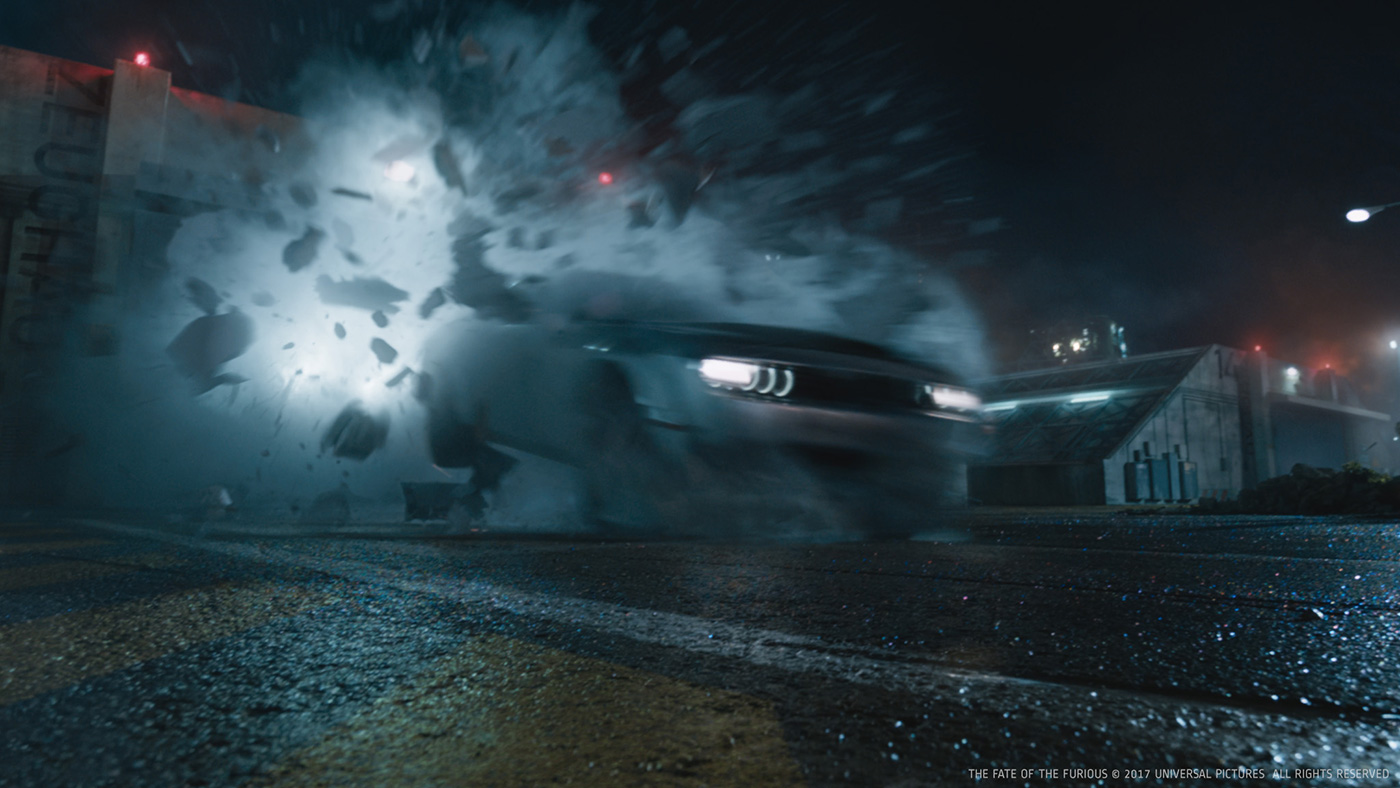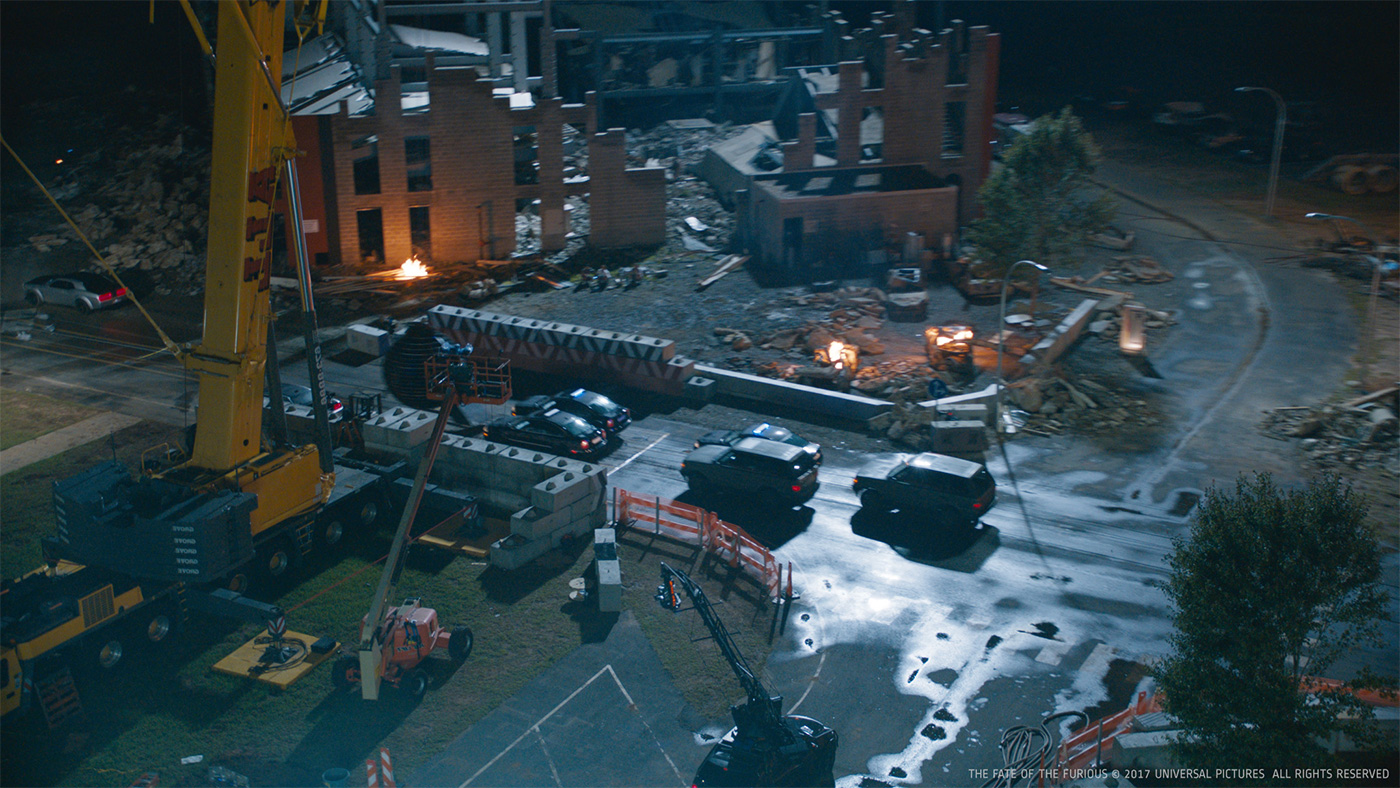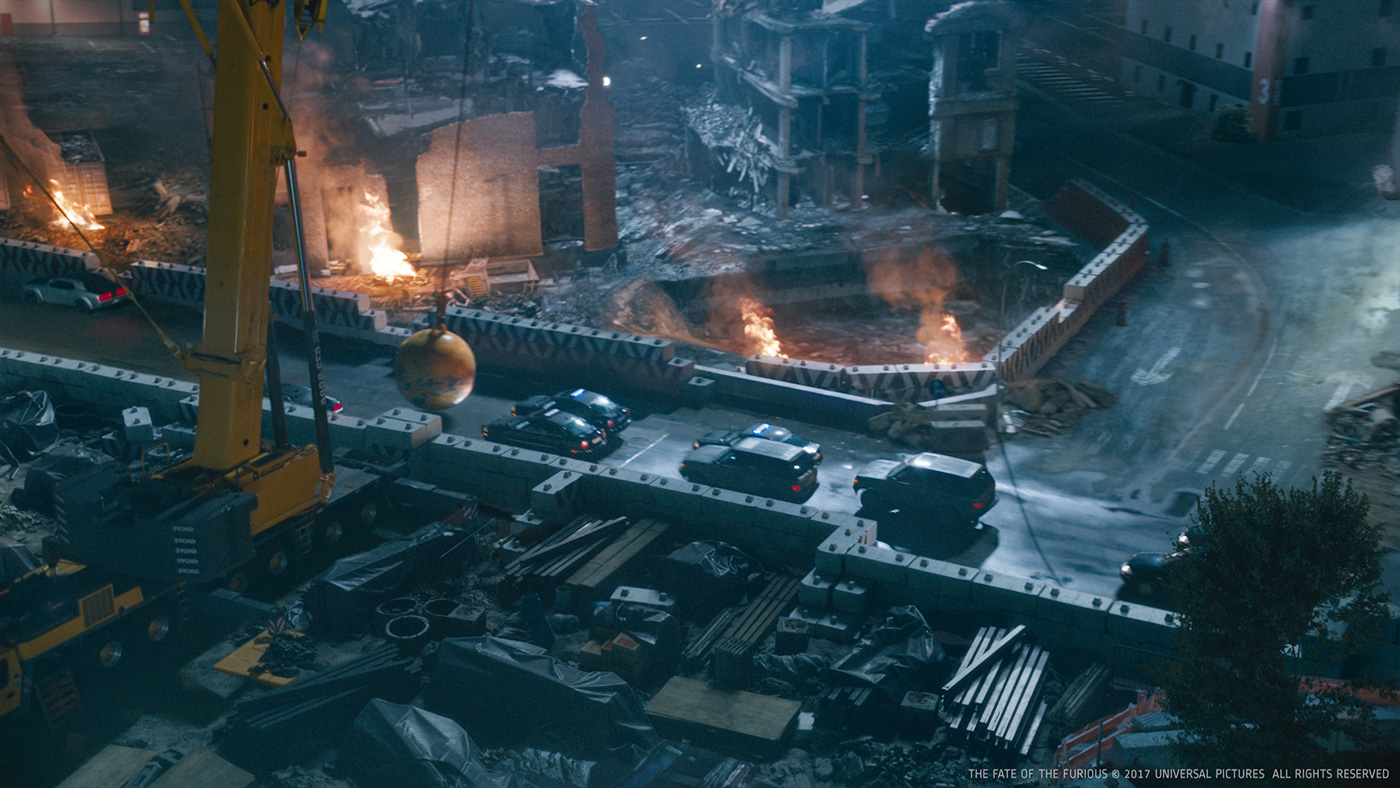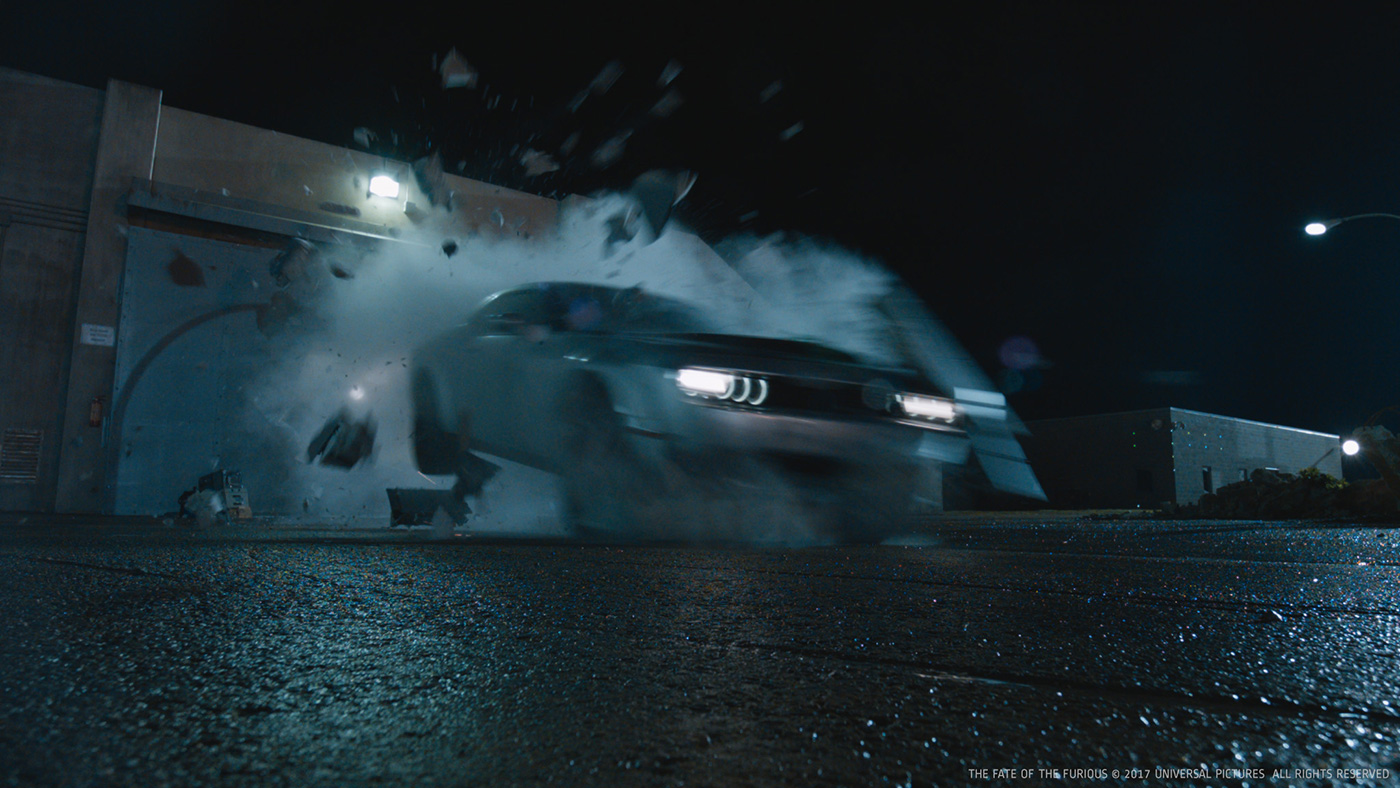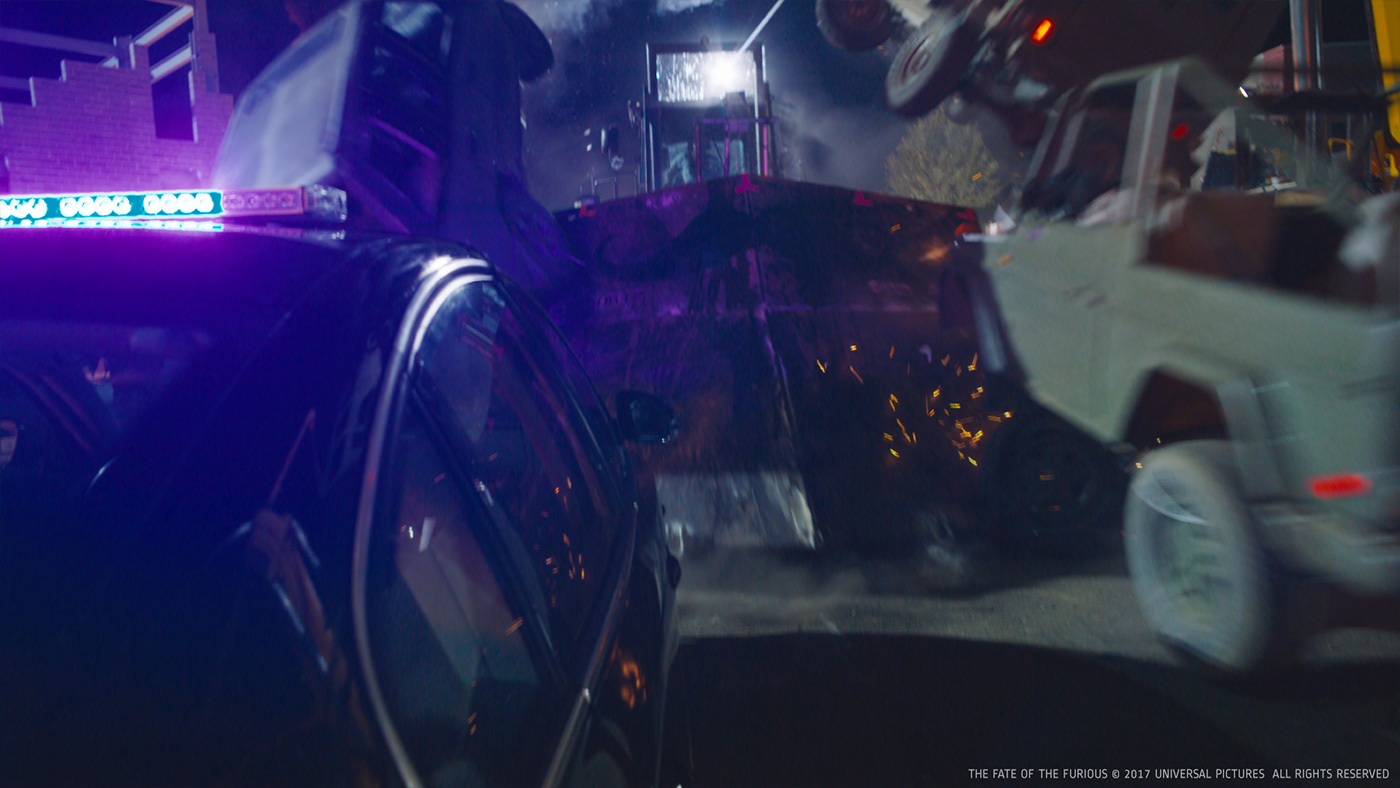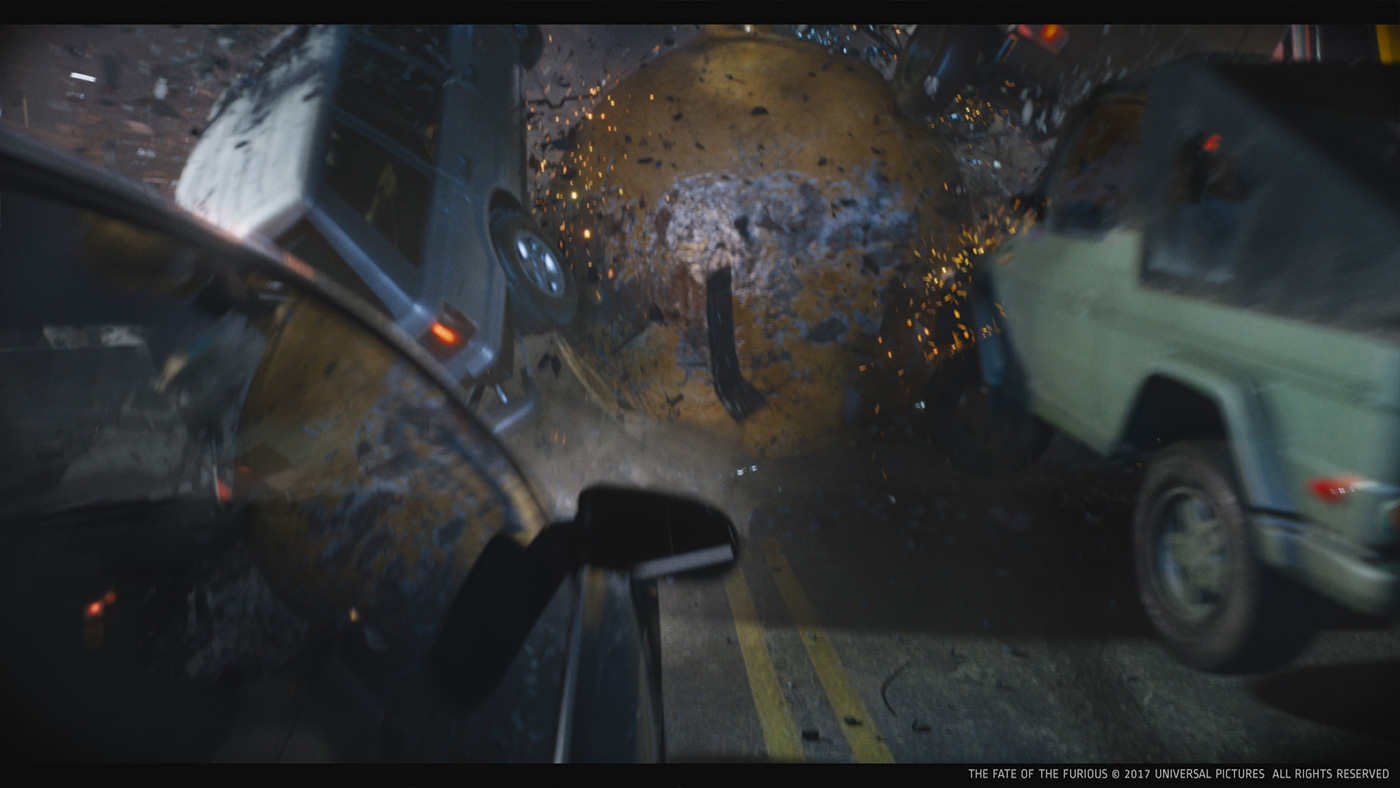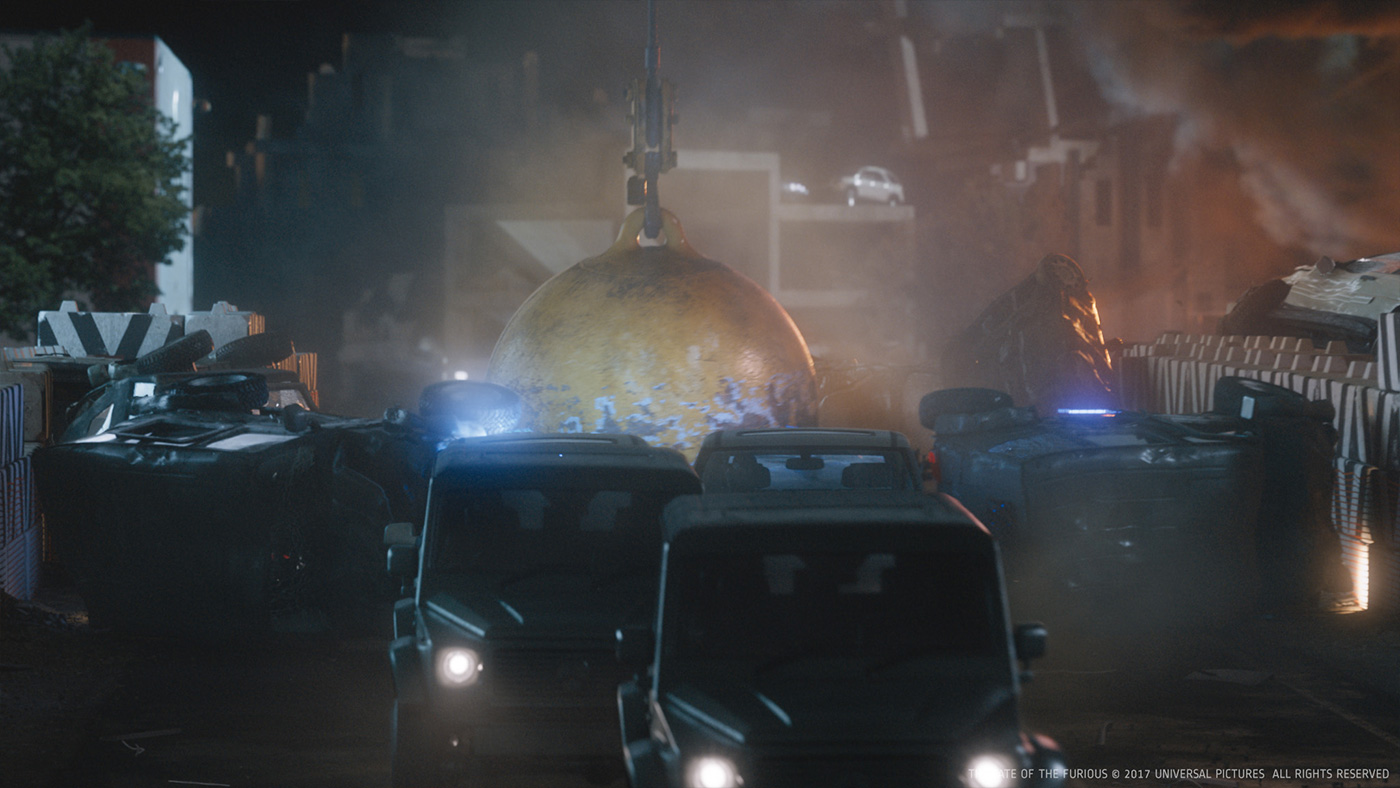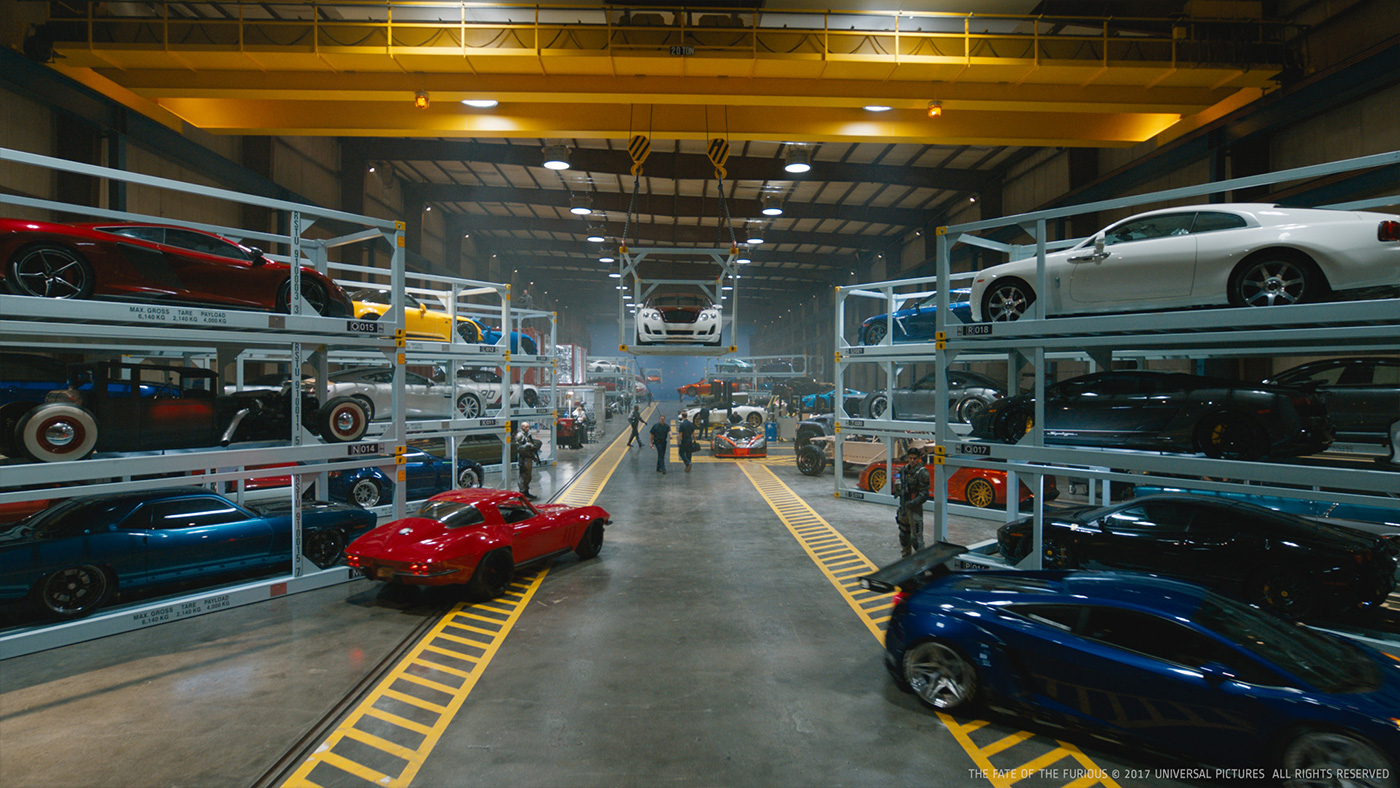Before joining Rodeo FX in 2015, Philippe Soeiro was at Eclair Numerique where he worked on numerous projects such as THE PIANIST, ALEXANDER, THE TRANSPORTER or THE NINTH GATE. Then he joined Autodesk to work as Lead Product Designer for Flame / Smoke. At Rodeo FX, he worked on CENTRAL INTELLIGENCE and THE SPACE BETWEEN US.
What is your background?
Not sure this is what you want to know, but academically I have an engineering degree in Physics and digital image processing. However I wasn’t particularly eager to work as an engineer on a day-to-day basis, and eventually found a way into post-production. [It is the discovery of Flame in 1993 that had a major impact on my career and life. I was fascinated by the endless creative possibilities that Flame offered, and from then on wanted to dedicate my energy and passion to moving images.] After a few years in video post-production at INA (Institut National de l’Audiovisuel), I moved on to film and worked for a decade in film post-production as lead compositor, and visual effects supervisor at Laboratoires Eclair in Paris at a very exciting time (the transition to full DI), and then spent another decade in software development as a lead product designer for Flame at Autodesk. I am now back « in the saddle » as VFX supervisor.
How did you and Rodeo FX get involved on this show?
The project came to Rodeo in the wake of successful collaborations on FURIOUS 7 and CENTRAL INTELLIGENCE for which Kelvin (McIlwain) was also acting as the studio VFX supervisor. I was offered to step in once the shooting of FAST 8 had just started. I accepted the offer, and embarked on what turned out to be quite a Fast & Furious ride.
How was the collaboration with director F. Gary Gray and VFX Supervisors Michael J. Wassel and Kelvin McIlwain?
As a vendor supervisor on the show, I had no direct contact with the director. On set I would leave any communication with F. Gary Gray to Michael and Kelvin. However the working relationship with Michael and Kelvin was extremely collaborative, leaving a lot of room for discussion and suggestions. It was very gratifying to build trust as we progressed through the project. It eventually allowed us to even drive some decisions that would otherwise be made in the editing room.
What was their approach and expectations about the visual effects?
It didn’t take long for me to understand that the expectations were very high. The franchise relies on a rather tricky balance of suspension of disbelief, where spectacular live-action stunts have to be fitted into a somewhat improbable narrative context. In that equation, realism, or visual plausibility rather, become a very important component. Viewers of the film may well assume that some things have been enhanced because they are so over the top; however the result should always keep you in that state of suspension of disbelief because you know the action was actually shot – you just don’t know how much of it. In that respect, I suppose it is analog to a Bond movie.
During the shoot, the most complex sequences went through daily iterations of previs, which provided a sense of narrative rhythm and image composition that were essential to anticipate problems and challenges. That process was extremely reactive, and we would sometimes go through multiple iterations in one day, while we were shooting! It was quite impressive actually.
Overall, the approach for this film was to always rely on a live action base for stunts that would need to be « enhanced ». While there were elements of the shooting that were shot with the intent of being replaced, the extent of the modifications to do on a shot would only be apparent once fitted back into a narrative context. It is the narrative context that dictated geography and continuity of the action, which in turn determined how much of the frame content needed to be replaced by CG and digital matte paintings. Dealing with that portion of unknown just meant that we had to anticipate quite a bit of roto and clean-up.
For driving comps, which play an important part in one of our sequences, the production had an established process whereby the actors were filmed in stripped down cars without windshields and windows. Cars were mounted on rigs that would create vibrations, while large screens running plates of the shot environment would produce a base for lighting interactions. The fact that cars were stripped down of their windshields, and therefore exposed parts of the frame that should not be seen, required these shots to be handled in CG to rebuild the missing parts, and their realistic interactions with the surrounding environment. The amplitude of the camera moves on some of these shots, is something that came as a surprise, many shots featuring ample orbiting camera motion outside of the vehicles. Not your average blue screen driving comp…
What are the sequences made by Rodeo FX?
Rodeo was awarded three sequences in the film: the Berlin car chase featuring the wrecking ball stunt, the Ultramax prison sequence, and the giant warehouse headquarters seen throughout the film.
How did you organize the work at Rodeo FX?
Well, we very quickly had to come to terms with the fact that the project would not work with a normal serialized CG pipeline, where tasks (modelling, rigging, texturing, layout, animation, FX simulations, and lighting) happen in a certain order separated by client validations. Deliverables, such as an early trailer featuring key CG-intensive shots of the Berlin chase, forced us to move many things in parallel, and dictated a very intense rhythm throughout the project. Managing the creation of all aspects of the CG assets in parallel was arguably the biggest challenge until the very end, because pipelines are not really designed to operate that way. This is what happened nonetheless, whether on shared assets, or shot specific assets.
However, environments and some key assets went through an « early » concept phase with the client. It took place after the shooting of all the stunts with the second unit. This allowed us to converge on the content and look and feel of the key geographic components seen in the sequences before building the set extensions. Most importantly, it allowed us to anticipate what type of technique was required: projected matte paintings, CG environments, or combination of both. The editorial context obviously played a big part in making some of those decisions as well.
From the very beginning, it was clear that the Berlin chase needed to be driven from a sequence perspective. Judging by the intricate combination of driving comps, and live-action car stunts, it was essential for me to have an on-line conforming process to keep track of continuity, and furthermore make decisions directly in that story-context. Building continuity was a key aspect of the work in that sequence. The on-line process served as a platform to mock-up all blue-screen comps using the actual EXR plates combined with AVID bins, and validate image composition, perceived speed, perspective consistency before shots even went to compositing. It also allowed us to identify areas of the sequence where there simply was no existing background that would work, or not enough of it.
This motivated us to create modular digital matte painting elements, and cg assets that could be assembled to produce backgrounds to fill in the « gaps ». Some blue screen shots ended up having full digital backgrounds to cover for the amount of dialogue featured in the scene.
In the last couple of months of the project, when the amount of shots to review grew significantly, we brought in Serkan Zelzele to act as assistant VFX supervisor to help me out with the Ultramax and warehouse sequences. This allowed me to focus on the Berlin sequence, which was really intense.
Which references and indications did you receive for the Berlin environment?
Not so many aside from the on-set references. This is an environment that went through a concept phase following the second unit shoot. The client wanted to have a combination of industrial architecture and set dressing that would feel like a research facility in the vicinity of a urban environment. Part of our mandate was to propose visuals for the set extensions. Since the scene was shot in a location that had already been set-dressed by production design, we had to come up with buildings and structures that would blend in with the established signage and set dressing, but give it a much a larger scale.
Can you explain in detail about its creation?
One of the challenges was that the set, although quite large, was much smaller than what the scene in the film suggests. There were no long straight roads to accommodate the dialogue between the characters, especially while driving at a perceived speed above 80 km/h. In order to visualize the progression of the cars during the chase, we created a map of the facility actually conforming to the scale required by the scene assuming an average speed of 80 km/h. This allowed us to understand how much of any given environment would need to be « stretched », and roughly determine the path the cars were taking (number of turns, straight lines, etc.). This was also compared against the background footage shot on set by the 6-camera rig to determine which sections of the environment would require extensions to avoid the « carousel » feeling. It was essential to be able to have geographical continuity, yet a clear progression between the distinct environments punctuating the chase.
The concept phase was instrumental in determining how the chase would be split into different environments: the exit of the bunkers, the destroyed facility transitioning into the wrecking ball site, a somewhat less destroyed facility after the wrecking ball stunt serving as another transition into the final « Dom goes rogue » environment – outside of the facility fences. While these environments are connected, they don’t exactly tell the same story. The « bunker exit », where the cars crash out of large docks had to immediately convey the sense of massive destruction due to the use of an unreasonable amount of explosives. It also had to establish the settings as a large industrial and manufacturing environment in which the chase takes place. The large bunker-like docks are only seen in those shots.
The chase continues within the destroyed facility environment, which serves as a more generic backdrop to a fair amount of dialogue. A key moment of that phase is when the team needs to make a sharp turn to avoid collision with incoming chasing vehicles. The helicopter shots, and the shots leading to that intersection served as the references for the destroyed facility environment during the concept phase.
The largest environment to create was definitely the wrecking ball site. This is an environment that needed to connect to the previously seen destroyed facility, but it also needed to be distinct and look like a construction site within the facility in order to justify the presence of the wrecking ball. The set however did not feature such visual distinction, and the logistics of the wrecking ball stunt required a very large empty security perimeter for the crane to operate. Furthermore, the sequence featured quite a bit of double cut action with dialogue, which suggested a much bigger environment than what was available on set. We ended up designing a very long stretch of construction site with extensive gauntlet walls to funnel the action around the impact. All backgrounds seen during that phase are intricate combinations of projected matte paintings with modular CG buildings, CG gauntlet walls, and CG construction set dressing. Some shots during the wrecking ball stunt feature completely digital backgrounds because the seen environment never existed on set.
We created a large library of digital pyrotechnical effects that were used at the compositing stage as « practical elements ». We had all the sizes of fires and different levels of wind affecting the plumes using the gas and kerosene on set fires as references. This allowed us to dial up or down the amount of smoke and fire visible in the shots wherever required.
During the car chase, a massive wrecking ball arrives and hits some cars. Can you explain in detail about its creation?
The wrecking ball went through a concept phase with the client. While we first approached it as a 2D concept, albeit using simple 3D geometry, it became clear that we needed to fully prototype in 3D, with textures and shading in order to satisfy the look-dev concerns of the VFX supervisors. A lot of discussions took place on the distribution of impacts, erosion patterns, the look of the chipped paint, the sand casting marks on such a large object, and its interactions with light. Discussions and prototyping also extended to all the related props such as the cable cutters, the sustaining cables, or the pelican case holding the electronics used to hijack the ball.
Some of the variables were imposed, since there was a wrecking ball on set to perform a portion of the stunts seen in the sequence. The CG wrecking ball had to cover the practical ball, which dictated its size, and it couldn’t be much larger at the risk of no longer fitting into the action. While the on-set wrecking ball was a large object (approx. 3 meters in diameter), it was partially hollow contrary to the CG wrecking ball. Conveying the appropriate sense of mass of such a large object during the multiple impacts also required a fair amount of animation tweaking until it felt appropriate.
How was the filming of this specific part of the sequence?
It was quite spectacular since there was an actual wrecking ball and crane on set to create the first series of impact seen on the film. Things were set up so that cars (stripped from their engines) would actually be pulled towards the wrecking ball by a series of cables connected to the ball. As the ball started its swing, it would cause the attached car frames to be pulled toward the impact point. The length of the cables was calculated so that the impact would occur in a precise location. In order to make the impact more spectacular, the ball was fitted with a sort of cowcatcher that would lift the cars up in the air at the point of impact. Only one swing/impact ended up being shot with the wrecking ball, while the backswing action was shot with multiple takes of a large truck(!) fitted with a huge improvised cow pusher! This made some of the shots extremely tricky. The resulting shots ended up being largely recreated in CG since the form factor between the truck and the CG wrecking-ball was completely different. Tumbling CG-cars, FX smoke and debris, were added to enhance the violence and chaos of the impact.
Can you explain in detail about the creation of the various cars?
We had Lidar scans of all the cars used on set. We also took as many reference pictures as we could on set. Both served as reference, but all the cars still had to be modelled from scratch based on the actions that each vehicle was seen performing on screen. Most vehicles were modelled in two different versions: with and without collision damage. Both versions were ultimately handled as separate assets, with different textures and appropriate shaders. The cars that were seen flipping over, also needed to have all their sides modelled accurately. Rigging obviously played an important part to ensure we had the freedom to create primary and secondary animations on all parts of the vehicles that were colliding with the environment.
Many destructions and explosions happen during this sequence. How did you create these FX?
There were practical fires on set that were either created with gas tanks, or with kerosene. Those fires served as visual references to build FX fires in Houdini. As mentioned previously, we pre-emptively created a large library of fires of different sizes, so that they could be inserted back in the digital set extensions and look consistent with the practical fires on set. Each digital fire was rendered over 500 frames to provide enough “footage” even at accelerated speeds. This was done upstream of any compositing and matte painting work. The idea was really to let the compositing artist use those digital fires as one would use practical elements. Other destruction events, including the bunker door exploding, the various flying debris seen during the wrecking ball collision, the ambient smoke, were all generated as FX simulations in Houdini.
Hobbs is betrayed by Dom and that ends in a car crash. Can you tell us more about your work on this sequence?
The car stunt was actually performed on set. However the sequence required various enhancements and set extensions to tie everything together. The violence of impact of the car and the electric box was enhanced to make it more spectacular. We replaced the on-set practical electric box with a CG model that stayed put at impact to justify the car tumbling, and further enhanced the violence of the impact with digital debris, and gushing sparks. Shots in the sequence required a lot of tricky clean-up, set extension of a distant city light background in one direction, and the distant burning facility in the other. Since the dialogue with the actors and the car stunts were shot in different locations, we had to make them look like one and the same with matte paintings, CG lamp posts, and CG fence extensions.
Later in the movie, the team arrives in a secret garage full of luxurious cars. How did you extend this set?
This is another environment that went through a concept phase to determine the scale of the extension, its overall shape, and its content. It needed to look over the top enormous, and feature very large recognizable objects to convey that sense of scale. At the same time, it was not meant to draw too much attention as a (mostly out of focus) background. It’s there, but it is never the subject of the shot. The limited range of viewing angles allowed the extension to be handled with projected matte paintings. However some foreground lighting panels covering the ceiling visible in some shots were CG.
Did you develop new tools for this show?
Not really, however we introduced the process of bringing all the high resolution EXR shots and AVID bins into an on-line finishing system (Flame) to mock-up all driving blue screen shots, validate continuity, background selections, backplate stitching, speed of backgrounds, and image composition. Building modular matte painting and CG building blocks to create backgrounds in that context was a new approach as well.
What was the main challenge on this show and how did you overcome it?
I would say that it was keeping control of the CG pipeline, when everything had to progress in parallel yet was dependant on something being produced concurrently. I would like to tell you that we came up with a really smart way of doing that, but ultimately it took a lot of vigilance, dedication, and inevitable last minute retries to pull it through.
Another challenge was to validate intermediate stages of our work when not everything is in place, yet convey the final intent to the client. One good example is the shots featuring a lot of FX debris and smoke during collisions. Obviously the debris play a significant part in conveying a sense of chaos and violence of impact. However, shots like that require animation to be fixed and validated before simulations can be run accurately. In order to validate the animations with the client, and not undermine the sense of impact, we ended up dressing the animation mockups with temporary debris elements taken from all over the place. They became mockups on top of being animation pre-comps. This would then allow the director to give his blessing for the next phase, and do the actual FX simulations on locked animations.
Was there a shot or a sequence that kept you up at night?
Most of the wrecking ball shots that featured the truck were definitely on top of the list of « nerve wrecking » shots. But I would say that the full CG shot concluding the wrecking ball havoc had the number one spot. That shot came into the equation very late in the post-production cycle, and featured actions that were on the edge of what the assets were designed for. It featured visible collisions, and therefore transitions between undamaged cars, and their damaged version. Furthermore, it featured the largest number of CG cars flying in the air, or bouncing off the ground with complex interactions with the environment. Arguably the most complex shot we had to produce on the show.
What is your best memory on this show?
Most definitely the collaborative relationship with Mike and Kelvin. It is what kept us making suggestions and alternate versions until the very end despite a very tight schedule, just because we thought it could benefit the film.
How long have you worked on this show?
I worked on the film from June 2016 to April 2017, which was very short considering the amount of work that had to be done.
What’s the VFX shots count?
If you count the trailer-specific shots, we are in a 300-shot ballpark. The trailer on its own had over 65 VFX shots with very high quality standards, some of which did not end up in the actual cut of the film.
What was the size of your team?
We had over a hundred people working on the show at the peak of crunch time.
What is your next project?
An exciting project… that I am not allowed to disclose yet. Ask me again sometime…
What are the four movies that gave you the passion for cinema?
That’s a really tough one… I will focus on films that had an impact at an early age.
Walt Disney’s SLEEPING BEAUTY made an enormous impact as a child. In fact, I first wanted to be an animator before anything else, and I very early recognized the technical and artistic prowess of the first ever made anamorphic animation masterpiece. As I grew up, I also came to realize it wasn’t a very popular choice to defend as a teenage boy…
2001: A SPACE ODYSSEY, not only because the take aways from the film change as you mature, and just when you think you understand it, you have to accept you probably didn’t entirely; but also because it is a humbling reminder of what practical effects can achieve while still standing the test of time. It is also one of those rare films that did not twist physical laws in space, yet managed to make an incredible visual impact.
ON HER MAJESTY’S SECRET SERVICE, the Bond movie that is either hated or loved because it is so different in many ways. It made a huge impression when I first saw it as a teenager because it was the first (Bond) film that presented an extremely strong independent female character played by Diana Rigg that almost eclipsed an iconic male character. The beautiful settings in the Swiss alps, the musical score by John Barry, the remarkable Maurice Binder title sequence, the very tight editing during the fighting sequence, the retro skiing chases, the incredible miniature effect shots of Blofeld’s hideaway, contributed to make a strong impression.
SUPERMAN, just because of its monumental title sequence (the longest in film history) that today would be done entirely in CG, but at the time was done using optical slit-scan to achieve the never-before-seen remarkable 3D titles, perfectly timed to the majestic (and intentionally pretentious) John Williams score. The Krypton visuals of the film still stand out as an iconic visual landmark.
A big thanks for your time.
// WANT TO KNOW MORE?
Rodeo FX: Dedicated page about THE FATE OF THE FURIOUS on Rodeo FX website.
© Vincent Frei – The Art of VFX – 2017

